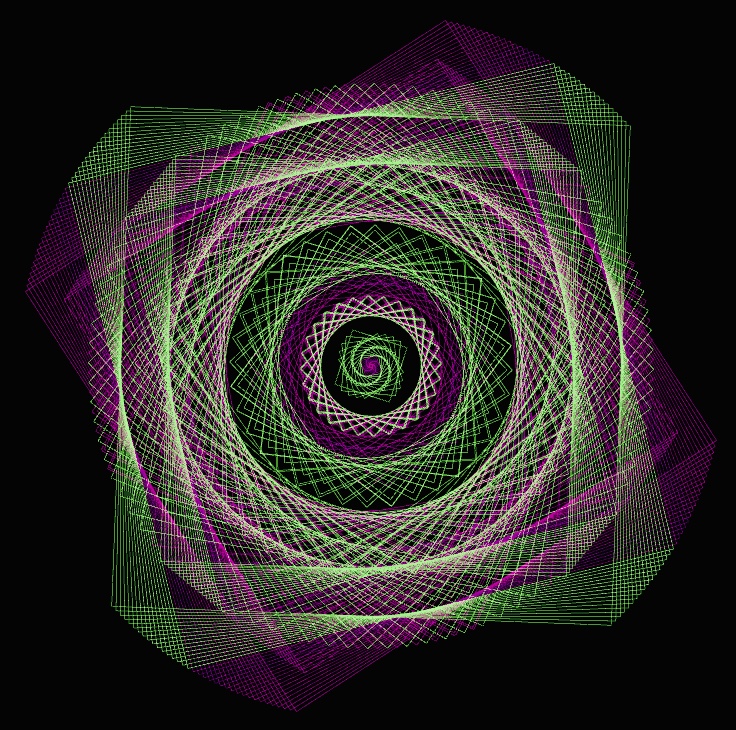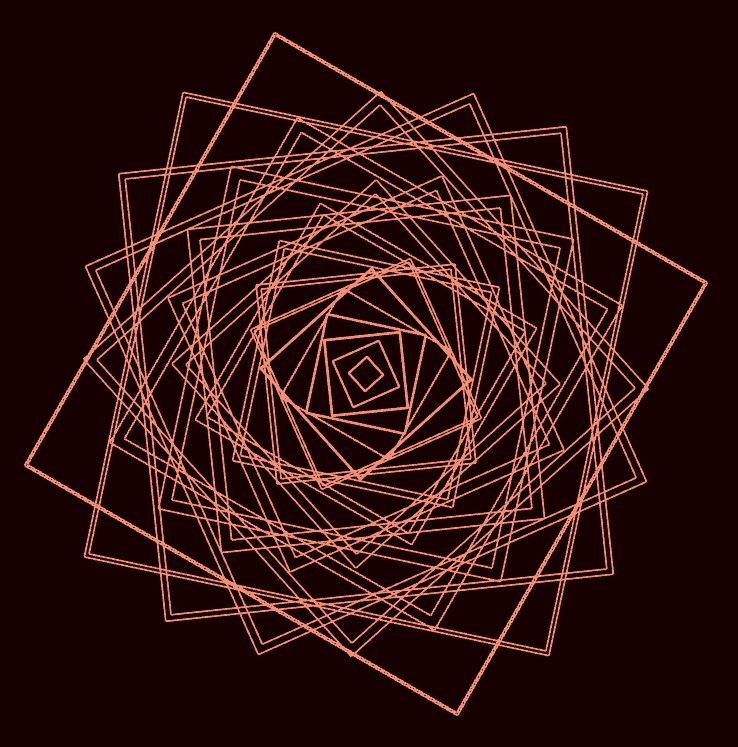Altered States of Consciousness
Altered States of Consciousness is a projection mapping installation that investigates visual hallucinatory forms that stem from altered states of consciousness. This is known as “form constants” which are visual geometric hallucinations.
Produced by Katherine Symons
Introduction
This work explores visual altered states of consciousness with reference to how the human brain is able to see visual geometric hallucinations.
Concept Development
My concept and visuals are inspired by geometric visual hallucinations. Geometric visual hallucinations are not just experienced by individuals who take psychedelics, but also experienced through meditation and hypnagogic and hypnopompic states of consciousness. Hypnagogic and hypnopompic is a mental phenomenon that can occur in the transitional state from sleep to wakefulness and vice versa. It is a threshold consciousness that includes hallucinations, lucid dreaming and sleep paralysis. One also sees geometric visual hallucinations in near death experiences, epilepsy, visual aura migraines or by viewing very bright flickering lights. It can occur in healthy individuals as well as individuals with certain conditions (Bressloff et al, 2002). When one experiences altered states of consciousness, it mostly reaches visual sensory; these sensory features are phosphenes which can look like random dots, winged objects, representational images and geometrical patterns which are known as form constants.
Psychologist Heinrich Klüver termed these geometric visual hallucinations as “form constants”, which is taxonomised into various shapes and forms such as: a) tunnels and funnels, b) spirals, c) lattices of triangles shapes and cobweb-like patterns. Visual form constants are generated in the brain and their origin is within the visual cortex area V1 (Bressloff et al, 2002). Think of the V1 area as a two-dimensional sheet where an object or a scene is projected as a two-dimensional image on the retina of each eye. Every point is mapped by two coordinates. The alternating areas of light and dark make up a geometric hallucination, and this is caused by intermittent areas of contrasting high and low neural activity in the V1 (Freiberge, 2014).
Mathematicians Jack D. Cowan and G. Bard Ermentrout implemented Klüver’s taxonomy of form constants to create a theory which describes what is happening in our brain when it tricks us into thinking that we are seeing geometric patterns (Freiberge, 2014).
Some of the sketches in this work are also inspired by geometry, from which I added the golden angle, which equates to 137.5 degrees. Inspiration was also drawn from stochastic processes in terms of colours generated by chance and how this relates to the randomness that one experiences in visual altered states of consciousness (Dorin, 2015).
Artist Inspiration
The artists who inspired me initially were Paul Constance and John Whitney Sr.
Technical
This work was made up of seven algorithmic sketches which were written in the C++ programming using openFrameworks (open source toolkit for creative coding). This was written in integrated development environments (IDEs); Visual Studio for Windows and later Xcode for mac. The code consisted of for loops, nested for loops, sin/noise, if-statements, vectors, rotations, lerp and the use of random. They were then converted into their own class system in one FBO source with addons consisting of ofxpimapper for projection mapping and a JSON file to create different presets and timers. This work consisted of 11 scenes for the purpose of depicting my sketches in a variety of different timings, particularly short time frames to give a more realistic representation of visual hallucinations.
Future Development and Reflection
The next iteration can develop further by introducing lucid dreams and this can be implemented by adding more high ordered complexity and levels of control with the use of more algorithms that can use more if, else and while statements. This is in order to gain more control and complexity, instead of stochastic randomised processes. However, for the purpose of this present project, stochastic processes were intended as they suited the randomised processes that go within the V1 area of the brain during altered states of consciousness.
Self-evaluation
Before this module, I had never programmed before, nor had I done projection mapping. In addition, I hadn't had much experience in the digital arts. It was a steep learning curve when converting my algorithmic sketches to work with ofxPiMapper, as it changed the resolution of my sketches. Another learning curve was planning how to work from the digital to physical 3D shapes for projection mapping. I feel it would help having access to a projector during the process of making the sketches, but unfortunately COVID prevented this.
References
Code References:
Class Code Examples in weeks 7 and 8, retrieved from: https://learn.gold.ac.uk/course
Openframeworks Graphics, retrieved from: https://openframeworks.cc/documentation/graphics/ofGraphics/
Openframeworks Book, retrieved from: https://openframeworks.cc/ofBook/chapters/intro_to_graphics.html
Conceptual References
Bressloff, P. C., Cowan, J. D., Golubitsky, M., Thomas, P. J., & Wiener, M. C. (2002). What geometric visual hallucinations tell us about the visual cortex. Neural computation, 14(3), 473-491.
Constance, P(2016, 26 July). Form Constants of Optical Mineralogy. Retrieved from: https://www.dataisnature.com/?p=2199
Dorin, A. (2013, March). Chance and complexity: stochastic and generative processes in art and creativity. In Proceedings of the Virtual Reality International Conference: Laval Virtual (pp. 1-8).
Freiberger, M. (2014, January 24). How do we hallucinate? Retrieved from: https://plus.maths.org/content/how-do-we-hallucinate#:~:text=From%20the%20visual%20field%20to%20the%20visual%20cortex&text=The%20alternating%20regions%20of%20light,they%20are%20not%20firing%20rapidly.
Moritz, M. (1997, August). Digital Harmony: The Life of John Whitney, Computer Animation Pioneer. Animation World Magazine. Retrieved from: https://www.awn.com/mag/issue2.5/2.5pages/2.5moritzwhitney.html


































































